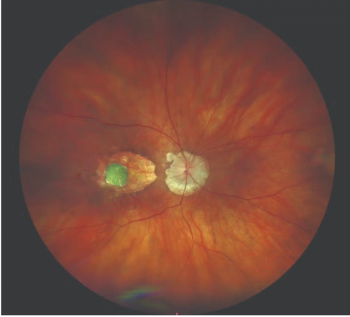
- Modern Retina May and June 2025
- Volume 5
- Issue 2
Improving retinal drying and treatment durability with second-generation anti-VEGF therapies
Recapping a recent conversation led by Dilsher S. Dhoot, MD.
In May 2025, Dilsher S. Dhoot, MD, moderated a
The first case involved a patient with persistent subretinal fluid who initially received bevacizumab without improvement. After switching to aflibercept 2 mg, the patient had persistent subretinal fluid, and vision was maintained at 20/25 to 20/30. Later, the patient was switched to faricimab. Following the second dose of faricimab, there were some improvements. From there, the decision was made to switch to aflibercept 8 mg, which resulted in the patient’s anatomy normalizing, a reduction of subretinal fluid, and vision remaining at 20/25.
Another compelling case featured a patient with bilateral nAMD who responded notably well to aflibercept 8 mg. The treatment resulted in near-resolution of intraretinal fluid in the left eye and near-resolution of the pigment epithelial detachment (PED) in the right eye. This allowed for the extension to 6-week intervals. In response to this case, the roundtable participants debated treatment approaches; some preferred loading doses before extending the time between doses, whereas others opted for immediate extension based on patient response. The discussion also highlighted the importance of monitoring potential complications, such as retinal pigment epithelium tear risks associated with large PEDs. There was some consensus that the ophthalmologist should discuss these risks with patients and document potential outcomes.
The closing cases illustrated the versatility of anti-VEGF treatments. One patient improved from 20/100 to 20/50 vision after switching to aflibercept 8 mg, whereas another demonstrated the challenges of maintaining treatment efficacy with first-generation anti-VEGF therapies.
Key discussion points included the following:
- The benefits of second-generation anti-VEGF therapies
- Individualized treatment strategies
- The importance of patient monitoring
- Potential challenges in maintaining long-term treatment effectiveness
The roundtable discussion provided valuable insights into current retinal treatment approaches, highlighting the nuanced decision-making process in managing nAMD. Participants shared experiences and learned from one another’s perspectives, highlighting the collaborative nature of medical practice. The roundtable bridged the gap between resident learning and physician expertise, comprehensively exploring contemporary retinal
treatment strategies.
Articles in this issue
6 months ago
Highlights from ARVO 20257 months ago
Drugs to treat GA: Yes, please!7 months ago
Pearls for engaging in clinical trialsNewsletter
Keep your retina practice on the forefront—subscribe for expert analysis and emerging trends in retinal disease management.












































